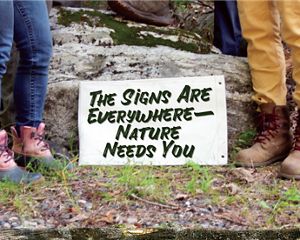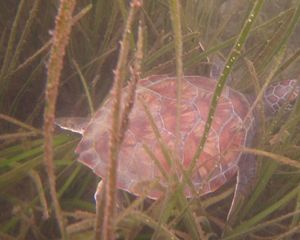7 Reasons to Leave the Leaves
Boost soil health, wildlife and sustainability in your yard this fall.

Fall in Connecticut brings crisp air, brilliant foliage—and a yard full of leaves. But before you grab your rake, consider this: those leaves aren’t just debris. They’re habitat, mulch and a nutrient-rich gift from nature. So, what’s the best move for your yard and the environment?
Here are 7 reasons to leave the leaves, skip raking this fall and help wildlife thrive:
1. 🍁 Leaves Are Nature’s Fertilizer — Leave the leaf litter to improve soil health naturally.
Trees pull nutrients from the soil all year—and return them to the ground through fallen leaves. Mulching or mowing leaves into your lawn helps recycle those nutrients, improving soil health and reducing the need for synthetic fertilizers
2. 🐛 Leaf Litter Is Wildlife Habitat — Leave the leaves and support biodiversity in your yard.
Many insects—including luna moths, fireflies and queen bees—hibernate in leaf litter. Birds like northern cardinals forage in it for food and shelter. Removing leaves too early can disrupt these vital life cycles.
3. 🧤 Timing Matters for Spring Cleanup — When to rake for eco-friendly yard care.
If you leave leaves over winter, wait until daytime temps consistently reach the 50s and nighttime lows stay above freezing before raking. This gives overwintering insects time to emerge safely.

4. 🗑️ Landfilling Leaves Is a Waste — Reduce methane and yard waste.
Bagging leaves for landfill disposal contributes to methane emissions and wastes a valuable resource. Even municipal green waste collection, while better, still requires energy and transport.
5. 🌿 Composting Leaves Is a Win-Win — Turn fall leaves into garden gold!
Leaves are a great addition to backyard compost piles. Mix them with kitchen scraps and other yard waste to create rich, dark compost that feeds your garden and reduces household waste.
6. 🏡 Mulch for Garden Beds — Benefits of leaf litter for plants.
Shredded leaves make excellent mulch for flower beds and vegetable gardens. They suppress weeds, retain moisture, and break down slowly to enrich the soil.
7. 🧘 Aesthetic vs. Ecological Balance — Leave the leaves for a tidy yet wildlife-friendly yard.
If you prefer a tidy yard, consider raking leaves into garden beds or creating a leaf pile in a corner of your yard. You’ll maintain curb appeal while still supporting local wildlife.
So—rake or not to rake? The answer depends on your goals. But with a little planning, you can turn this seasonal chore into an act of environmental stewardship. 🍂🌎
Stay in the Loop
Sign up for the Nature News email and receive conservation stories each month.



